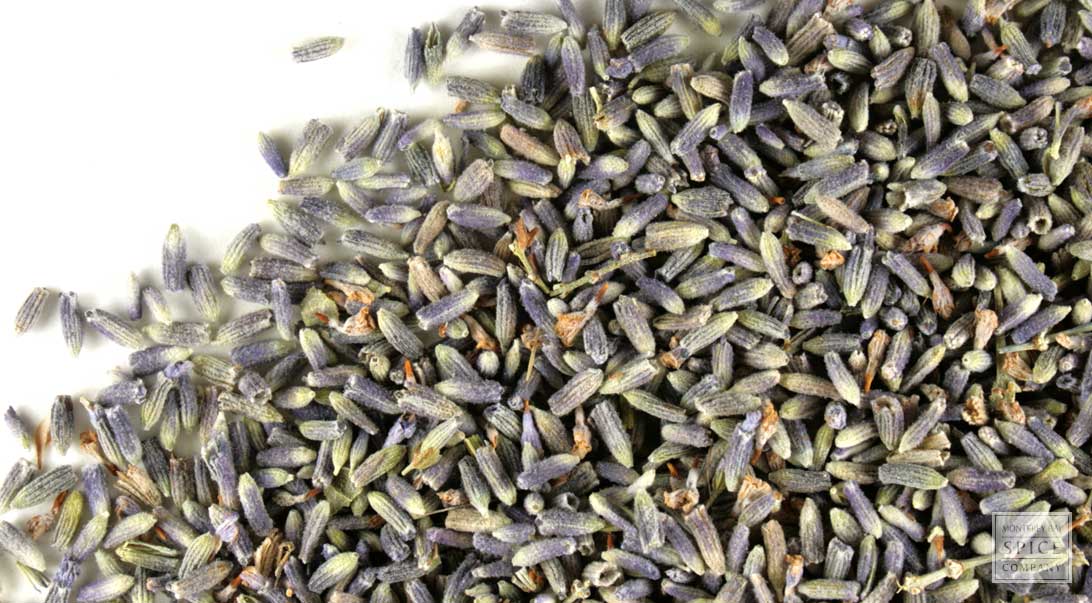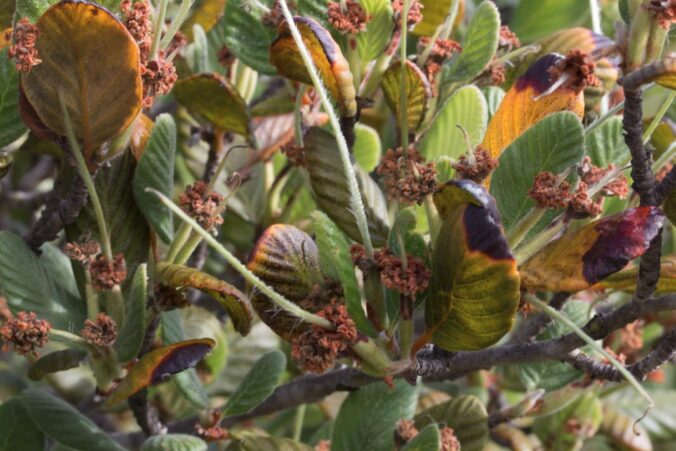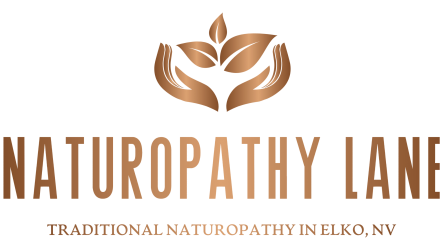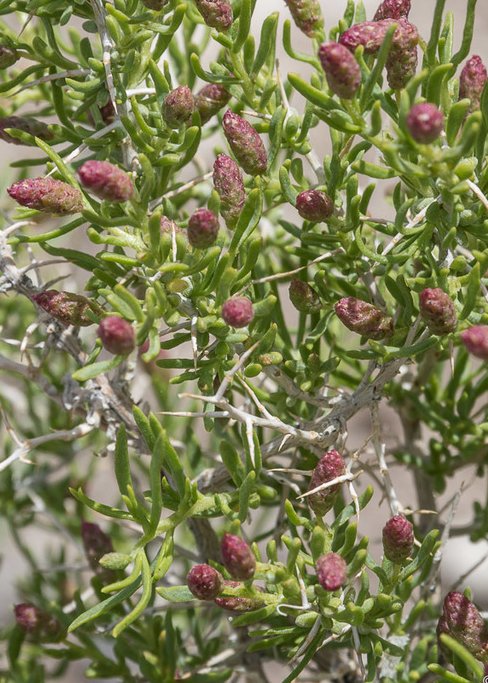We spend a minute discussing normal inflammation versus abnormal or chronic inflammation and what herbs can be used and how they work on your system.
Tag: digestive aid (Page 1 of 2)
Any substance that improves digestion.

Natures Mood Boosters
These are natural ways to help relieve symptoms of Depression and Anxiety over time. These are not for emergency use.

Hormones, Men, and Metabolic Disease – What’s Really Going On?
How does metabolic disease become a snowball in the hormonal sense in men? Find out here as well as what you can do to start improving the situation.

Wild Yam: A Natural Health Solution
Wild yam, scientifically known as Dioscorea villosa, is a type of plant that has been used for centuries in traditional medicine practices. It’s known for its ability to support healthy hormonal balance, promote digestive health, and improve overall well-being. In this blog post, we’ll explore the different species of wild yam, where it grows, its active constituents, how it works in the body, and any potential contraindications. This herb belongs to the genus Dioscorea, which is a large group of plants that are native to Africa, Asia, Australia, and North America. The most commonly used species for medicinal purposes is Dioscorea villosa, also known as wild yam or wild sarsaparilla. This herb is typically found in the forests of Central and South America, but it can also be cultivated in other parts of the world. The best quality wild yam comes from sustainable farming practices, ensuring that the plant is grown in a way that is environmentally responsible.
Wild yam contains several active constituents that are responsible for its medicinal properties. Some of the most notable compounds include diosgenin, dioscorea, and sarsasaparillate. These compounds have been shown to support healthy hormonal balance, promote healthy digestion, and protect our bodies from damage caused by free radicals. This herb has a number of effects on various biochemical pathways in the body. One of its primary functions is to support healthy hormonal balance. The active compounds in yam can help regulate hormone levels, particularly estrogen and progesterone, which are important for women’s health. Additionally, yam has been shown to support healthy digestion. The plant contains compounds that can help reduce symptoms associated with menstrual cycles, alleviate digestive issues such as bloating and constipation, and promote healthy liver function. Wild yam also has anti-inflammatory effects, which can help protect our bodies from damage caused by free radicals.
Contraindications
While wild yam is generally considered safe for most people, there are some potential contraindications to be aware of. Women who are pregnant or breastfeeding should avoid taking wild yam, as it may affect hormone levels and could potentially harm the developing fetus or baby. People with liver issues should also exercise caution when taking wild yam, as it can have an effect on liver function. Additionally, individuals with allergies to plants in the Dioscorea genus should avoid taking wild yam, as it may cause an allergic reaction.
Wild yam is a powerful natural health solution that has been used for centuries to support healthy hormonal balance and promote overall well-being. By understanding the different species of this herb, where it grows, its active constituents, how it works in the body, and any potential contraindications, we can make informed decisions about incorporating this incredible plant into our daily health routine. As always, it’s important to consult with a healthcare professional before adding any new supplements or herbs to your diet.
If you’re interested in learning more about wild yam and its benefits, be sure to check out our latest blog posts.

Breathe a Little Easier with Life Root
Life Root, also known as Sarsparilla or Smilax, is a popular herb in traditional medicine practices. It belongs to the family Araceae and is native to the tropical regions of South America, Central America, and parts of Africa. The root of the plant is used for medicinal purposes, while the leaves are often used for making baskets and other crafts. Life Root may be taken in various forms, including capsules, tablets, tinctures, and teas. It is commonly used to support overall health and well-being, as it may have benefits for the immune system, inflammation response, digestive function, and cardiovascular system.
Active Constituents: Life Root contains several active constituents that have therapeutic properties. Sarsaparillin: This compound has anti-inflammatory, immune-boosting, and antioxidant properties.
Life Root contains Sarsaparillin has been shown to stimulate and regulate the immune system by increasing the production of white blood cells, which are responsible for fighting off infections and illnesses. By supporting the immune system, Sarsaparillin can help keep the body healthy and protected from disease. Sarsaparillin has anti-inflammatory properties that may help reduce inflammation throughout the body. This is particularly beneficial for conditions like arthritis, asthma, and allergies, where chronic inflammation can cause pain, discomfort, and other symptoms. By reducing inflammation, Sarsaparillin can help promote overall health and well-being.Sarsaparillin may also support healthy digestion by promoting the growth of beneficial gut bacteria and improving nutrient absorption. This is important for maintaining a healthy digestive system and preventing issues like constipation, bloating, and acid reflux. The compounds in Sarsaparillin have been shown to help improve heart health by reducing blood pressure and inflammation, as well as strengthening the cardiovascular system. This is important for maintaining a healthy cardiovascular system and preventing conditions like heart disease and stroke.
Smilacin: This compound is a steroidal glycoside that has been shown to have anti-inflammatory effects, particularly in the respiratory system.Smilacin is known for its potential to reduce inflammation in the respiratory system. This is particularly beneficial for individuals with asthma or other respiratory conditions, where chronic inflammation can cause symptoms like shortness of breath, wheezing, and coughing. By reducing inflammation in the lungs and airways, Smilacin may help improve breathing and overall lung function. While there is limited research on Smilacin’s impact on the immune system, some studies suggest that it may have immunostimulatory properties that can help support the body’s natural defenses against infection and disease. By promoting a healthy immune system, Smilacin may help keep the body protected from illness. Smilacin has been shown to have anti-inflammatory effects throughout the body, which may be beneficial for conditions like arthritis and inflammatory bowel disease (IBD). By reducing inflammation, Smilacin may help promote overall health and well-being. While there is limited research on Smilacin’s impact on the digestive system, some studies suggest that it may have a positive effect on gut health by promoting healthy gut bacteria and improving nutrient absorption. This is important for maintaining a healthy digestive system and preventing issues like constipation, bloating, and acid reflux.
Withaferin A: This compound has been studied for its potential cancer-fighting properties and its ability to inhibit the growth of certain types of tumors. Withaferin A has been shown to have a potential anti-cancer effect by inhibiting the growth of certain types of tumors. It may do this by blocking the growth of new blood vessels, which are necessary for the growth and survival of cancer cells. By preventing the formation of new blood vessels, Withaferin A may help slow down or even stop the growth of cancer cells. Withaferin A also has anti-inflammatory properties that may help reduce inflammation throughout the body. This is important for maintaining overall health and well-being, as chronic inflammation can contribute to a variety of health issues, including cancer, heart disease, and autoimmune disorders. While there is limited research on Withaferin A’s impact on the immune system, some studies suggest that it may have immunostimulatory properties that can help support the body’s natural defenses against infection and disease. By promoting a healthy immune system, Withaferin A may help keep the body protected from illness. Withaferin A has been shown to have potential benefits for cardiovascular health by reducing blood pressure and inflammation, as well as improving heart function. This is important for maintaining a healthy cardiovascular system and preventing conditions like heart disease and stroke.
Contraindications:
While Life Root is generally considered safe when taken in appropriate amounts, it may cause side effects such as nausea, vomiting, and diarrhea. It should not be taken by pregnant or breastfeeding women, or by individuals with kidney or liver disease. Additionally, Life Root may interact with certain medications, so it is important to consult with a qualified healthcare professional before taking it.
Life Root is a versatile and powerful herb that can offer numerous health benefits when used properly. With its active constituents, Sarsaparillin and Smilacin, it may have an impact on several biochemical pathways in the body by supporting the immune system, reducing inflammation, promoting healthy digestion, and improving overall cardiovascular function. Additionally, Withaferin A has been studied for its potential cancer-fighting properties and other health benefits. As with any natural health product, it is important to consult with a qualified healthcare professional before taking Life Root, especially if you have any pre-existing medical conditions or are taking any medications.

The Multifaceted Benefits of Lavender
Lavender (Lavandula spp.)
is a well-known and versatile plant that belongs to the Lamiaceae family. Its fragrant flowers and oil have been used for centuries in natural medicine, aromatherapy, and culinary purposes. In this blog post, we will explore the history of lavender in traditional Chinese medicine, Ayurvedic medicine, and western medicine, its active constituents, biochemical pathways they influence, and any potential contraindications.
History in Natural Medicine
Traditional Chinese Medicine (TCM): In TCM, lavender is considered a cooling and calming herb that can be used to treat various conditions such as headache, dizziness, and restlessness. It is often combined with other herbs to create formulations for a wide range of health issues. In Ayurvedic Medicine: In Ayurveda, lavender is used to balance the three doshas (Vata, Pitta, and Kapha) and promote overall well-being. Its cooling and calming properties make it an ideal herb for treating anxiety, stress, and sleep disorders. Western Herbal Medicine: In modern times, lavender essential oil has gained popularity in aromatherapy and natural remedies due to its soothing and relaxing effects. It is commonly used to treat stress, anxiety, insomnia, and digestive issues.
Active Constituents and Biochemical Pathways
Lavender contains several active constituents, including linalyl acetate, linalool, and lavandulin. These compounds are known to influence various biochemical pathways, such as the GABAergic system, which plays a crucial role in regulating anxiety and sleep. Lavender has also been found to exhibit anti-inflammatory properties by Lavender’s anti-inflammatory properties can be attributed to the synergistic effects of its active constituents, primarily linalyl acetate and linalool. These compounds are believed to modulate the activity of various inflammatory mediators, such as cyclooxygenase (COX), lipoxygenase (LOX), and inducible nitric oxide synthase (iNOS). Cyclooxygenase (COX): COX is an enzyme responsible for the production of prostaglandins, which play a crucial role in inflammation. Lavender has been found to inhibit both COX-1 and COX-2, thereby reducing the production of pro-inflammatory prostaglandins.Lipoxygenase (LOX): LOX is an enzyme involved in the synthesis of leukotrienes, which are inflammatory mediators. Lavender has been shown to inhibit LOX activity, thereby reducing inflammation. Inducible nitric oxide synthase (iNOS): iNOS is an enzyme that produces nitric oxide (NO), a potent inflammatory molecule. Inflammatory cells such as macrophages and microglia express iNOS during inflammation, leading to increased NO production. Lavender has been found to inhibit iNOS expression, resulting in reduced NO production and inflammation. In addition to these mechanisms, lavender’s anti-inflammatory properties may also be due to its ability to modulate the activity of transcription factors, such as nuclear factor kappa B (NF-κB), which plays a central role in the regulation of inflammatory responses. By inhibiting NF-κB activation, lavender can help suppress the production of pro-inflammatory cytokines and chemokines.
Lavender’s analgesic properties can be attributed to the synergistic effects of its active constituents, which mainly include linalyl acetate and linalool. These compounds are believed to interact with the vanilloid receptor 1 (VR1), also known as the capsaicin receptor, located on sensory neurons. Activation of the VR1 receptor produces a pain-relieving effect by blocking the transmission of pain signals from the peripheral nerves to the brain. Moreover, lavender essential oil has been found to increase the release of endorphins (the body’s natural painkillers) and decrease the production of inflammatory mediators, such as prostaglandin E2 (PGE2). These effects contribute to the overall analgesic properties of lavender.
Lavenders’ antimicrobial properties can be attributed to the synergistic effects of its active constituents, primarily linalyl acetate and linalool. These compounds have been found to exhibit antimicrobial activity against a wide range of microorganisms, including bacteria, fungi, and viruses. Bacteria: The essential oil components of lavender can inhibit bacterial growth by disrupting the cell membrane, which leads to the leakage of intracellular contents and eventual cell death. Additionally, lavender has been found to interfere with bacterial protein synthesis and DNA replication, further contributing to its antibacterial properties. Lavender essential oil exhibits antifungal activity by inhibiting fungal growth and mycelium formation. It can also damage the fungal cell membrane, leading to the disruption of intracellular processes and eventual cell death. Although less studied than bacterial and fungal interactions, some research suggests that lavender essential oil may have antiviral properties. This activity is likely due to its ability to interfere with viral protein synthesis or inhibit the replication of viral RNA or DNA.
Contraindications
While lavender is generally considered safe for use, there are some potential contraindications to be aware of:Pregnancy: The safety of lavender during pregnancy has not been well-studied. It is recommended to consult a healthcare professional before using lavender essential oil while pregnant. Breastfeeding: Lavender essential oil should be used with caution when breastfeeding, as its safety for infants has not been thoroughly evaluated. Allergic reactions: Individuals with allergies to the Lamiaceae family or related plants should avoid using lavender. Drug interactions: Lavender may interact with certain medications, such as benzodiazepines and barbiturates, by enhancing their sedative effects. It is essential to consult a healthcare professional before combining lavender with prescription medications.
Conclusion
Lavender is a herb with a long history in natural medicine. Its active constituents and biochemical pathways influence various health aspects, making it an ideal choice for treating anxiety, stress, and sleep disorders. While it is generally considered safe for use, potential contraindications should be taken into account before incorporating lavender into your wellness routine. Always consult with a healthcare professional before using lavender or any other natural remedy.
For more reading on Natural Health, check out these blog posts:
Mushrooms: Chaga Mushrooms
Herbs: Devil’s Claw | Loveage | Meadowsweet
Other Site Pages: Natural Medicine Blog Posts

Desert Willow
Desert Willow is a fascinating plant that grows in arid environments throughout the southwestern United States and parts of Mexico. It belongs to the willow family (Salicaceae), which also includes more widely known species such as the pussy willow and the crack willow. In this blog post, we will explore the history of Desert Willow in natural healing, its active ingredients, and their effects on various biochemical pathways. We will also discuss some contraindications for using this herb in natural medicine.
There are several species of Desert Willow, including C. velutinus, C. californicus, and C. mexicanus. These plants are small trees or shrubs that grow in arid environments such as deserts and grasslands. They have distinctive reddish-purple leaves and produce small white flowers in the spring. Desert Willow is an important plant for the indigenous peoples of the southwest, who have used it for centuries to treat a variety of ailments.
Desert Willow has been used by the indigenous peoples of the southwest for centuries as a traditional medicine. The plant was used to treat a variety of ailments, including headaches, fever, and digestive issues. It was also used as an anti-inflammatory and to reduce swelling. The Pima people used this herb to treat diarrhea and stomach pain. This herb contains several active ingredients that have been studied for their potential medicinal properties. Some of the key compounds in Desert Willow include Salicin, This compound is found in all willows, including Desert Willow, and is responsible for the plant’s analgesic and anti-inflammatory effects. Quercetin: This compound is a natural antioxidant that has been shown to have anti-inflammatory and immune-boosting properties. Rutin: This compound is a natural flavonoid that has been shown to have anti-inflammatory and cardiovascular protective effects.
The active ingredients in Desert Willow have been studied for their effects on various biochemical pathways, including:
- Inflammation: The compounds in this herb have been shown to reduce inflammation by inhibiting the production of pro-inflammatory cytokines.
- Oxidative stress: Quercetin, a compound found in this herb, has been shown to protect cells from oxidative stress and damage.
- Cardiovascular health: The compounds in this herb have been shown to have cardiovascular protective effects by reducing inflammation and improving circulation.
While Desert Willow has many potential health benefits, there are some contraindications for using the plant in natural medicine. Desert Willow should not be used during pregnancy or lactation as it can have an effect on the uterus and may cause miscarriage. The plant should also be avoided by those with epilepsy or taking seizure medications as it may increase the risk of seizures. Additionally, Desert Willow can interact with certain medications, such as blood thinners, so it is important to consult a healthcare professional before using the plant in natural medicine.
Desert Willow is a fascinating plant that has been used by the indigenous peoples of the southwest for centuries as a traditional medicine. It contains several active ingredients that have been studied for their potential medicinal properties, including analgesic and anti-inflammatory effects. However, there are some contraindications for using Desert Willow in natural medicine, including during pregnancy or lactation and by those with epilepsy or taking seizure medications. As with any natural remedy, it is important to consult a healthcare professional before using Desert Willow in natural medicine. I hope you have enjoyed this series on Nevada’s Native Herbs.

Mountain Mahogany
Mountain Mahogany (Vaccinium membranaceum) is a low-growing, evergreen shrub that can grow up to six feet tall and has oval leaves with smooth edges. It is commonly found in the mountains of California, Nevada, Oregon, and Washington and prefers well-draining soil conditions and full sun exposure.
Mountain Mahogany grows naturally in mountainous regions of western North America and can be found near other native plants such as redwoods, Douglas fir, and Sitka spruce. It is commonly used for landscaping and erosion control due to its ability to tolerate harsh soil conditions and low water requirements.
This herb has been used by Native Americans for centuries as a medicinal plant. The bark, leaves, and berries were used to treat various ailments such as diarrhea, colds, coughs, and sore throats. Today, Mountain Mahogany is still used in herbal medicine to regulate digestion, lower cholesterol levels, and improve immune function.
This herb contains several active compounds that have various health benefits. Hydroquinone, for example, is an antioxidant that has been shown to protect against cellular damage caused by free radicals. Catechin, another active compound found in Mountain Mahogany, has been linked to improved cardiovascular health and reduced risk of heart disease. Additionally, the berries of this herb are high in antioxidants and vitamin C, making them a valuable food source for humans and wildlife alike.
Mountain Mahogany interacts with several biochemical pathways within the body. For example, it has been shown to inhibit the enzyme cytochrome P450 2E1 (CYP2E1), which plays a role in metabolizing drugs and xenobiotics. Additionally, this herb has been found to increase the activity of the antioxidant enzyme superoxide dismutase (SOD). This suggests that Mountain Mahogany may have a protective effect against oxidative stress caused by free radicals.
While Mountain Mahogany has many potential health benefits, it should be used with caution in certain populations. Pregnant women and those with liver or kidney disease should avoid using Mountain Mahogany due to its high concentration of hydroquinone and other bioactive compounds that can cause adverse effects when taken in excessive amounts. Additionally, individuals taking prescription medications should consult with their healthcare provider before starting supplementation with Mountain Mahogany, as it may interact negatively with certain drugs.
In conclusion, Mountain Mahogany is a valuable herbal remedy with many potential health benefits. Its active compounds have been shown to regulate digestion, lower cholesterol levels, and improve immune function. However, it should be used with caution in certain populations due to its high concentration of bioactive compounds that can cause adverse effects when taken in excessive amounts. It is important for individuals interested in using Mountain Mahogany as a supplement to consult with their healthcare provider before starting any new medication or supplement regimen.
Nevada native Greasewood (Garcinia glauca) is a small evergreen shrub that can grow up to three feet tall and has narrow, oblong leaves with sawtooth edges. It is commonly found in the Mojave Desert region of California, Nevada, and Utah. Geographic Area and Growing Conditions Preferred Greasewood thrives in dry, sandy soil conditions and can be found growing near Joshua trees, cacti, and other desert plants. It prefers full sun exposure and does not require much water to grow.
Greasewood has been used for centuries by Native Americans as a medicinal plant. The seeds were roasted and ground into flour, while the bark was boiled and made into a tea to treat various ailments such as diarrhea, dysentery, and sore throat. Today, greasewood is still used in herbal medicine for its ability to regulate blood sugar levels, lower cholesterol, and improve digestion.
Greasewood contains several active compounds that have been found to have numerous health benefits. For example, hydroxycitric acid (HCA) is a compound found in high concentrations in the leaves of greasewood and has been shown to inhibit the enzyme ATP citrate lyase, which plays a key role in fat storage. HCA also blocks the activity of an enzyme called alpha-amylase, which breaks down complex carbohydrates into simple sugars in the small intestine. This can help regulate blood sugar levels and reduce cravings for sweets.
Greasewood interacts with several biochemical pathways in the body, including those involved in carbohydrate metabolism, lipid metabolism, and gastrointestinal function. For example, HCA has been shown to increase the breakdown of fat cells in the liver and reduce the production of new fat cells. Additionally, greasewood stimulates the production of digestive enzymes such as lipase and amylase, which can help improve digestion and nutrient absorption.
While greasewood has many potential health benefits, there are some contraindications to its use. Pregnant women, people with diabetes, and those taking medications for blood sugar control should consult a healthcare professional before using greasewood supplements. Additionally, individuals with gastrointestinal disorders such as inflammatory bowel disease or irritable bowel syndrome should use caution when consuming greasewood, as it may exacerbate these conditions.
Overall, Nevada native Greasewood (Garcinia glauca) is a promising herbal remedy with numerous potential health benefits. Its active compounds such as HCA have been shown to regulate blood sugar levels, improve digestion, and stimulate the breakdown of fat cells. However, individuals with gastrointestinal disorders or taking medications for blood sugar control should consult a healthcare professional before using greasewood supplements.

Wild Rue
Wild rue, scientific name Ruta graveolens, is a native plant to Nevada that has been used in natural medicine for centuries. This small shrub is easy to identify with its distinctive appearance, including feathery leaves and small blue flowers. In this blog post, we will explore the history of wild rue as a medicinal plant, its active constituents, and their effects on various biochemical pathways. We will also discuss some contraindications for using wild rue in natural medicine.
This herb is native to the Mediterranean region, and many western states including Nevada, as well as other parts of the world such as Africa and Asia. It thrives in dry, rocky areas with well-draining soil. The plant can grow up to 3 feet tall and has a distinctive feathery appearance due to its compound leaves. Wild rue is an evergreen perennial that produces small blue flowers in late spring or early summer.
Wild rue has been used in natural medicine for centuries, dating back to ancient civilizations such as the Greeks and Romans. It was originally used as a digestive aid and to stimulate circulation. The plant was also used for its antiseptic properties and as a treatment for snake bites. In traditional medicine, wild rue was often used to treat digestive issues, including indigestion, constipation, and nausea.
Wild rue contains several active constituents that have been studied for their potential medicinal properties. Some of the key compounds in wild rue include:
* Rutin: This compound has been shown to have anti-inflammatory, antioxidant, and cardiovascular protective effects.
* Limonene: This compound is a natural fragrance that has been shown to have anti-inflammatory and anti-cancer properties.
* Thujone: This compound has been shown to have analgesic, anti-inflammatory, and antimicrobial properties.
* Pinenes: These compounds are found in the resin of pine trees and have been shown to have anti-inflammatory and immune-boosting properties.
The active constituents in wild rue have been studied for their effects on various biochemical pathways, including:
* Inflammation: The compounds in wild rue have been shown to reduce inflammation by inhibiting the production of pro-inflammatory cytokines.
* Oxidative stress: Rutin, a compound found in this herb, has been shown to protect cells from oxidative stress and damage.
* Cardiovascular health: The compounds in wild rue have been shown to have cardiovascular protective effects by reducing inflammation and improving circulation.
* Digestion: Wild rue has been used traditionally as a digestive aid, and its active constituents may help to improve digestion by stimulating the production of bile and promoting regular bowel movements.
While this herb has many potential health benefits, there are some contraindications for using the plant in natural medicine. This herb should not be used during pregnancy or lactation as it can have an effect on the uterus and may cause miscarriage. The plant should also be avoided by those with epilepsy or taking seizure medications, as it may increase the risk of seizures. Additionally, this herb can interact with certain medications, such as blood thinners, so it is important to consult a healthcare professional before using the plant in natural medicine.
Wild rue is a native plant to Nevada that has been used in natural medicine for centuries. It contains several active constituents that have been studied for their potential medicinal properties, including anti-inflammatory, antioxidant, and cardiovascular protective effects. However, there are some contraindications for using wild rue in natural medicine, including during pregnancy or lactation and by those with epilepsy or taking seizure medications. As with any natural remedy, it is important to consult a healthcare professional before using wild rue in natural medicine.



